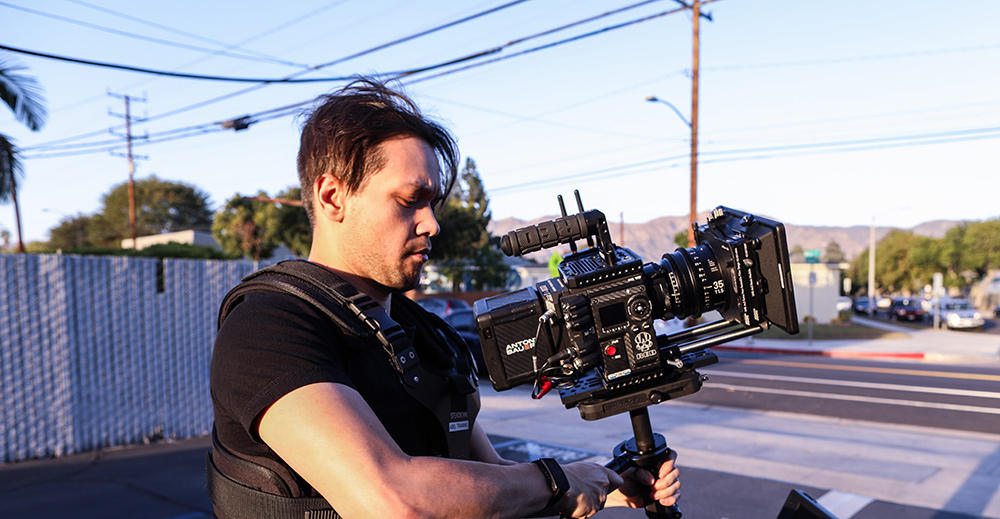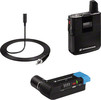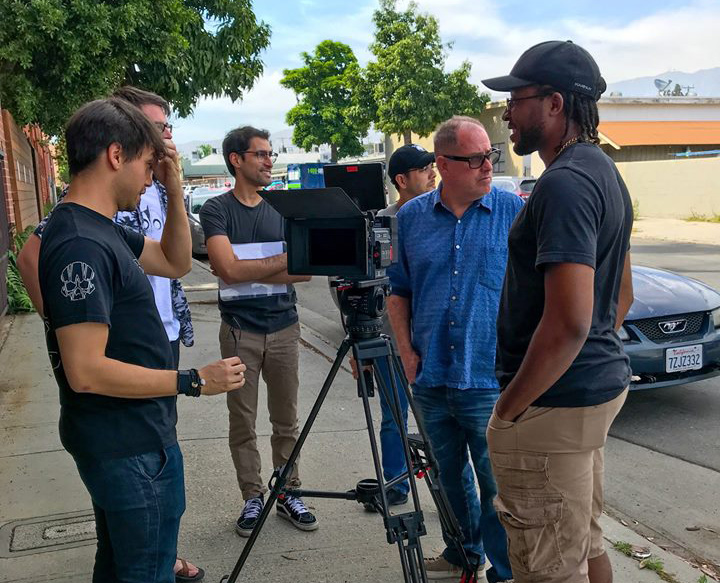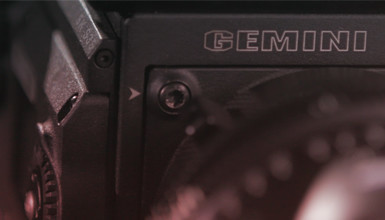EDITOR'S NOTE: At the end of November 2018, RED announced the DRAGON-X sensor, bring the total number of sensors available for DSMC2 bodies to four.
I've worked on many documentary films and narrative work shot in cinéma vérité style, so I've always held the idea of a self-contained, "take-on-all-comers" camera close to my heart. With new camera bodies like the GEMINI making short work of low available light situations, and a plethora of powerful third-party accessories to add important functionality, RED cameras are in a better place than ever for this type of work.
A good documentarian becomes a "fly on the wall", and their subjects forget they’re there. Likewise, a good doc camera gets out of the operator's way. This kit, which I nicknamed “Herzog”, includes the accessories I've used in these types of environments. I also describe how I rig to make the camera an extension of me, rather than a piece of gear I have to babysit.
CAMERA BODY & RIGGING
ARRI makes some of the most robust rigging in the industry, and once installed, their LWS Broadcast Set for DSMC2 can live on the camera due to its high level of adjustability. Being able to quickly switch from tripod to handheld without having to remove or replace the shoulder pad is invaluable in a doc setting. This rig also includes plenty of extra mounting points when needed, and the included RED EVF/monitor LEMO port and 3-pin record/stop are just icing on the cake.
I like to add the ARRI HEB-3 Handle Extension, as the extra real estate is helpful for mounting additional gear and getting a solid grip for low angle shots. Wooden Camera’s new Air EVF Mount makes an awesome addition to the ARRI rig, as it makes adjusting the EVF to a comfortable position much easier.
When shooting handheld, I prefer to have my hands near the lens axis, as I find it gives me a feeling of connection to the camera. In doc environments, I'm often pulling focus myself off the lens barrel, so it makes sense to keep both hands in the same vertical plane as well, as opposed to below the camera with other grips. It may make me a bit of a hipster, but I love the Aaton-style wooden handgrips, and I think they are worth the small premium over a rubber handle for something you'll have in your hand for hours at a time. Many companies have good versions of these now, but Wooden Camera's is excellent and has a universally configurable trigger box. In this configuration, I include the ARRI standard RS 3-pin cable to the trigger box so I can plug into the top plate of the ARRI rig instead of having to go all the way to the back of the camera. Unless I'm working with a bigger lens, I like to stick to the 15mm lightweight rod standard. A rosette bracket is needed to get the handgrip attached there, and again, Wooden Camera provides a simple and cost-effective option.
VIEWFINDERS & MONITORS
EVFs are a versatile way to view your frame, no matter if you're outside in the bright sunlight doing a wilderness conservation shoot, or if you're in the moody darkness of a seedy club trying to capture some intrigue. I find I'm much more connected to my subject matter when I'm in the viewfinder, and I like that they don't require any special considerations for shooting conditions, like a monitor needing a hood to shield glare, for example. RED's DSMC2 OLED is one of the sharpest and most detailed I've used.
Despite my preference for an EVF, you still sometimes need an external monitor, either for convenience of viewing the frame, or for quick camera control. I find the RED 4.7" Touch LCD is big enough to provide a decent view while not being so big it gets in the way of vérité style shooting.
Although the ARRI kit for DSMC2 includes a LEMO adapter built into the top plate, sometimes I want to run the 4.7" monitor and the EVF at the same time, so a second set of LEMO adapters is needed. I like to use a normal RED right-angle to straight cable for the EVF, and the Wooden Camera Pogo to Pogo cable for the monitor, because it includes the necessary adapters hardwired right to the cable.

CAMERA INTERFACE & ELECTRONIC CONTROL
Getting proper audio into the camera is crucial for doc style work. I like the Teradek OMOD XLR2 because it adds not just full-sized XLR inputs, but also high-grade pre-amps to provide phantom power. It's not going to surpass a dedicated second system sound setup, but it sounds a lot better than self-powered microphones. Importantly for doc shooters, the OMOD has external hardware gain/level controls, a fast and easy way to make this adjustment. The headphone output now monitors the recording on the camera instead of the mic inputs, allowing you to truly monitor audio on playback through the module. Learn more about my audio capture kit below.
I add the RED Sidekick to my DSMC2 body even when I’m not working with an AC because I prefer the camera control on a dedicated, menu-only device on the camera body, rather than relying on a monitor.
POWER & DISTRIBUTION
Personally, I like to keep my power distribution simple, and I prefer Gold-mount style batteries. Using the RED official mount means I have runtime calculations passed through to the viewfinder, which is really helpful for doc shooting where I don’t have an AC looking out for my battery life.
Anton Bauer’s CINE series batteries are a great fit for DSMC2 cameras thanks to their short profiles. I like the 150wh version for extended runtimes without the extra weight of a hot-swap or "shark fin" style adapter.
I actually like the slightly extended case of the CINE series for shoulder balance reasons, but the new Dionic XT series are available in a more traditional form factor with the same capacity. They are a good choice for Steadicams or lights, where a more compact size is important.
AUDIO
Wireless audio is a must for most setups, and Sennheiser’s AVX kit is a clean solution for rigging the necessary receivers. This system is only available as a one-to-one system. If you need more audio channels, the Sony UWP Digital Wireless Stereo Receiver is the most economical system I’ve found for 2-channel audio. Whenever I do audio into the camera, I like to run a shotgun mic. It's very useful for recording the environment and getting any unexpected audio off of someone who isn't wearing a lav. My favorite mic for that job is the Rode NTG3. It sounds way better and cleaner than its price would imply, and it's odd to put a more expensive mic on the camera where it won't sound its best.
When it comes to rigging audio devices on a cinema camera, I try to find the solution that best fits each situation. However, there are a few pieces of gear I keep coming back to because of their versatility. A good shock mount is important to keep handling noise out of camera-mounted mics. I like the Rycote InVision Shock Mount because it offsets the mic a bit and is lower-profile than other options.
When it comes to mounting receivers, things can get tricky. If I’m working with a sound person who has access to higher-end gear, I like to mount drop-in style receivers in a sandwich plate between the camera and battery, where they are out of the way and help balance the back of my rig. Ambient and others make these types of devices, but they can be specific to the brand of receiver, so I usually rely on the sound person to help me pick them out.
The Cameo V-Lock and associated accessory plates are handy when it comes to clip-on style receivers and smaller wireless units. They make it much easier to mount your gear, and the quick-release feature is great to have.
CAMERA SUPPORT
Though I love moving the camera and the freedom that handheld affords, I still use a tripod for the bulk of my shots on many projects. Having learned filmmaking on their larger Mitchell mount heads, I'm drawn to OConnor's fluid heads for their "stepless" counterbalance adjustments. I can always find the perfect balance point, even before added fluid for drag. I like the 1030 series for doc work because it's so much nicer to move around a lightweight 100mm based setup than a massive, heavy Mitchell-based cinema setup, especially by yourself. I think 75mm is too small for a camera like the RED, so 100mm is the best middle ground. For those unaware, the 1030DS model holds a heavier payload (58lbs/24kg @ 4" high CG) but only tilts to ±60 degrees, while the 1030D has a lighter payload limit (39lbs/18kg @ 4" high CG) but tilts to ±90 degrees.
For most shoots, I use the bundled tripod that comes with the 1030 head, but especially for outdoor or travel heavy work, I like to use Miller Solo legs. The telescoping tube style means no spreader to keep track of, and the unique way the legs twist to lock makes them less prone to breakage or jamming. I’ve also used their ridiculous height range to my advantage many times, as it means I don't also have to drag around a hi-hat for low angles and can go from on the floor to above my head without changing anything on the tripod.
QUALITY OF LIFE
No matter what type of shoot I go on, I try to take a Cinesaddle with me. If you think creatively about it as a tool, the uses are endless. I've used it with the shoulder strap to make even the most awkward hip-height shots comfortable and stable, on the floor when a hi-hat wasn't quite low enough, and even just plopping it on my lap to make a stable platform for backseat interviews. With a good ratchet strap and the included mounting kit, it can even secure the camera to the hood of a car. After all of that, it even makes a comfortable cushion to put on top of an apple box when you need to take a break!
Staying light and nimble is important, so I like to ditch the hard case for a run bag when I can. Shoulder bags are great for quick moves in mostly interior locations. I try to get one that's long enough that I can leave the camera built. Then I just pull out the camera and start shooting right away. Sachtler's doctor-style bags are my preferred version and are based on designs they acquired from Petrol Bags. I love their built-in LED lighting and bright orange lining, so you don't have to struggle in the dark to find that tripod screw that fell while you were changing the plate.
If I have to go into the great outdoors, I like a hiker-style backpack beacuse it’s more ergonomic than a shoulder bag for lots of walking. You don’t want to arrive at a location for the day’s shoot already tired and sore.
Anyone who works with RED cameras regularly should own a RED Sidewinder multi-tool. It has Imperial, Metric, and Torx keys all in one, plus a thick-bladed flathead driver for your tripod screws. As a bonus, unlike most multi-tools, it has no knife – so you won't have to "donate" it to the TSA if you forget to take it out of your bag before you get to the airport.


































AbelCine encourages comments on our blog posts, as long as they are relevant and respectful in tone. To further professional dialog, we strongly encourage the use of real names. We reserve the right to remove any comments that violate our comment policy.
AbelCine publishes this blog as a free educational resource, and anyone may read the discussions posted here. However, if you want to join the conversation, please log in or register on our site.
We use Disqus to manage comments on this blog. If you already have a Disqus account registered under the same email as your AbelCine account, you will automatically be logged in when you sign in to our site. If not, please create a free account with Disqus using the same email as your AbelCine account.